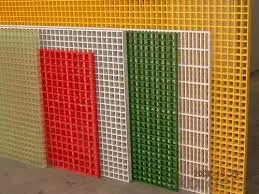
-
 Afrikaans
Afrikaans -
 Albanian
Albanian -
 Amharic
Amharic -
 Arabic
Arabic -
 Armenian
Armenian -
 Azerbaijani
Azerbaijani -
 Basque
Basque -
 Belarusian
Belarusian -
 Bengali
Bengali -
 Bosnian
Bosnian -
 Bulgarian
Bulgarian -
 Catalan
Catalan -
 Cebuano
Cebuano -
 China
China -
 China (Taiwan)
China (Taiwan) -
 Corsican
Corsican -
 Croatian
Croatian -
 Czech
Czech -
 Danish
Danish -
 Dutch
Dutch -
 English
English -
 Esperanto
Esperanto -
 Estonian
Estonian -
 Finnish
Finnish -
 French
French -
 Frisian
Frisian -
 Galician
Galician -
 Georgian
Georgian -
 German
German -
 Greek
Greek -
 Gujarati
Gujarati -
 Haitian Creole
Haitian Creole -
 hausa
hausa -
 hawaiian
hawaiian -
 Hebrew
Hebrew -
 Hindi
Hindi -
 Miao
Miao -
 Hungarian
Hungarian -
 Icelandic
Icelandic -
 igbo
igbo -
 Indonesian
Indonesian -
 irish
irish -
 Italian
Italian -
 Japanese
Japanese -
 Javanese
Javanese -
 Kannada
Kannada -
 kazakh
kazakh -
 Khmer
Khmer -
 Rwandese
Rwandese -
 Korean
Korean -
 Kurdish
Kurdish -
 Kyrgyz
Kyrgyz -
 Lao
Lao -
 Latin
Latin -
 Latvian
Latvian -
 Lithuanian
Lithuanian -
 Luxembourgish
Luxembourgish -
 Macedonian
Macedonian -
 Malgashi
Malgashi -
 Malay
Malay -
 Malayalam
Malayalam -
 Maltese
Maltese -
 Maori
Maori -
 Marathi
Marathi -
 Mongolian
Mongolian -
 Myanmar
Myanmar -
 Nepali
Nepali -
 Norwegian
Norwegian -
 Norwegian
Norwegian -
 Occitan
Occitan -
 Pashto
Pashto -
 Persian
Persian -
 Polish
Polish -
 Portuguese
Portuguese -
 Punjabi
Punjabi -
 Romanian
Romanian -
 Russian
Russian -
 Samoan
Samoan -
 Scottish Gaelic
Scottish Gaelic -
 Serbian
Serbian -
 Sesotho
Sesotho -
 Shona
Shona -
 Sindhi
Sindhi -
 Sinhala
Sinhala -
 Slovak
Slovak -
 Slovenian
Slovenian -
 Somali
Somali -
 Spanish
Spanish -
 Sundanese
Sundanese -
 Swahili
Swahili -
 Swedish
Swedish -
 Tagalog
Tagalog -
 Tajik
Tajik -
 Tamil
Tamil -
 Tatar
Tatar -
 Telugu
Telugu -
 Thai
Thai -
 Turkish
Turkish -
 Turkmen
Turkmen -
 Ukrainian
Ukrainian -
 Urdu
Urdu -
 Uighur
Uighur -
 Uzbek
Uzbek -
 Vietnamese
Vietnamese -
 Welsh
Welsh -
 Bantu
Bantu -
 Yiddish
Yiddish -
 Yoruba
Yoruba -
 Zulu
Zulu
grp cover
Exploring GRP Covers A Comprehensive Overview
Glass Reinforced Plastic (GRP) covers have gained significant popularity across various industries due to their remarkable properties and versatile applications. These covers, made from a robust combination of fiberglass and resin, provide an ideal solution for a range of needs, from industrial enclosures to architectural elements in construction projects.
One of the most critical advantages of GRP covers is their exceptional durability. Unlike traditional materials such as wood or metal, GRP is resistant to corrosion, rust, and significant weather damage. This durability makes GRP covers particularly suited for outdoor applications, where exposure to harsh environmental conditions can lead to deterioration of less resilient materials. For industries operating in coastal regions or areas with high humidity, the superiority of GRP in resisting corrosion becomes even more vital.
Exploring GRP Covers A Comprehensive Overview
The manufacturing process of GRP covers also allows for a high degree of customization. Architects and designers appreciate being able to mold GRP into varied shapes and sizes, tailoring products to unique specifications. This adaptability contributes to the aesthetic appeal of GRP covers, enabling them to meet not only functional requirements but also design aspirations. They can be produced in a range of colors and finishes, seamlessly integrating into the surrounding environment.
grp cover

In terms of maintenance, GRP covers require relatively low upkeep. Their resistance to fading and cracking ensures that they retain their appearance over time, reducing the need for regular repairs or replacements. This low-maintenance characteristic positions GRP as a cost-effective option in the long run, especially for projects requiring longevity and efficiency.
Another noteworthy benefit is the environmental impact of GRP covers. Many manufacturers are moving towards eco-friendly practices, producing GRP materials that are recyclable at the end of their life cycle. This shift aligns with the growing emphasis on sustainability in building and construction, providing a greener alternative while maintaining performance standards.
Despite their numerous benefits, some challenges are associated with GRP covers. The initial investment can be higher than that of traditional materials, which may deter some budget-conscious projects. However, the long-term savings on maintenance and replacement costs often justify the upfront expense.
In conclusion, GRP covers represent a significant advancement in materials science, offering a combination of durability, versatility, customization, and environmental consciousness. As industries continue to prioritize efficiency and sustainability, the adoption of GRP covers is likely to increase, showcasing their potential to revolutionize construction practices across various sectors. Whether for industrial use or architectural design, GRP covers stand out as a reliable, enduring, and eco-friendly solution that meets the demands of modern applications. With ongoing innovations and enhancements in this field, the future looks promising for GRP materials.









